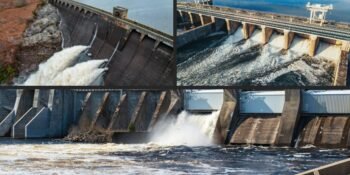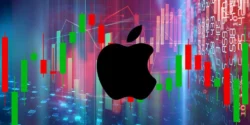In the realm of quantum mechanics, where the laws of physics operate at the smallest scales imaginable, quantum sensors emerge as powerful tools capable of revolutionizing measurement and detection. These cutting-edge devices harness the principles of quantum mechanics to achieve unprecedented sensitivity levels, enabling precise measurements of various physical quantities with remarkable accuracy and resolution. This article delves into the realm of quantum sensors, exploring their underlying principles, diverse applications, and their transformative impact on scientific research and technological innovation.
Unveiling Quantum Sensors
Quantum sensors represent a new frontier in sensing technology, leveraging the counterintuitive phenomena of quantum mechanics to detect and measure a wide range of physical quantities. Unlike classical sensors, which rely on classical physics principles, quantum sensors exploit quantum phenomena such as superposition, entanglement, and quantum coherence to achieve enhanced sensitivity and resolution in measurement tasks.
Quantum Principles at Work
At the heart of quantum sensors lie the fundamental principles of quantum mechanics, which govern the behavior of particles at the atomic and subatomic levels. Quantum sensors utilize techniques such as quantum superposition, where a particle can exist in multiple states simultaneously, and quantum entanglement, where the properties of particles become correlated in ways that defy classical intuition. By harnessing these quantum phenomena, sensors can achieve unprecedented precision and accuracy in measuring physical quantities such as magnetic fields, gravitational forces, and electromagnetic radiation.
Types of Quantum Sensors
Quantum sensors encompass a diverse range of devices tailored to specific measurement tasks and applications:
- Atomic Clocks: Atomic clocks, which utilize the natural oscillations of atoms as a timekeeping mechanism, represent one of the most well-known examples of quantum sensors. These highly precise clocks rely on the stable transitions of atoms, such as cesium or rubidium, to measure time with extraordinary accuracy, making them indispensable in applications such as global navigation systems and synchronization of telecommunications networks.
- Quantum Magnetometers: Quantum magnetometers leverage the sensitivity of quantum systems to detect minute magnetic fields with unparalleled precision. These sensors find applications in various fields, including geophysics, medical imaging, and materials characterization, where the precise measurement of magnetic fields is crucial for scientific research and industrial applications.
- Quantum Gravimeters: Quantum gravimeters exploit the principles of quantum mechanics to measure gravitational acceleration with extraordinary sensitivity. By precisely monitoring the free fall of atoms in a gravitational field, these sensors can map subsurface structures, monitor groundwater levels, and detect underground resources with high resolution and accuracy.
Applications and Impact
The capabilities of quantum sensors extend across a wide range of scientific, industrial, and technological domains:
Quantum Metrology
Quantum sensors play a vital role in metrology, the science of measurement, where precise and accurate measurements are essential for advancing scientific understanding and technological innovation. By harnessing the sensitivity and resolution of quantum mechanics, these sensors enable groundbreaking discoveries in fundamental physics, cosmology, and quantum information science.
Geophysical Exploration
In geophysics and earth sciences, quantum sensors offer unparalleled capabilities for exploring subsurface structures, mapping mineral deposits, and monitoring environmental phenomena. Quantum magnetometers and gravimeters provide valuable insights into the Earth’s magnetic field, gravitational field, and geological formations, facilitating resource exploration, disaster monitoring, and environmental stewardship.
Medical Imaging and Healthcare
In medical imaging and healthcare, quantum sensors contribute to diagnostic techniques, therapeutic interventions, and biomedical research advancements. Quantum-based imaging modalities, such as magnetic resonance imaging (MRI) and magnetoencephalography (MEG), rely on the sensitive detection of magnetic fields to visualize anatomical structures, map brain activity, and diagnose medical conditions with high precision and resolution.
Quantum Communication and Information Processing
Quantum sensors are crucial in developing quantum communication and quantum computing technologies. By harnessing the principles of quantum mechanics for secure communication and information processing, these sensors pave the way for quantum networks, quantum cryptography, and quantum computing platforms with unprecedented computational power and cryptographic security.
Future Directions and Challenges
As quantum sensor technology continues to advance, several key challenges and opportunities lie ahead:
Scalability and Integration
One of the primary challenges facing quantum sensors is scaling up their capabilities to meet the demands of real-world applications. Achieving scalability and integration of quantum sensor networks with existing infrastructure remains a significant technical hurdle, requiring device fabrication, signal processing, and system integration innovations.
Noise and Environmental Interference
Quantum sensors are highly susceptible to environmental noise and interference, degrading performance and accuracy. Mitigating noise sources, such as thermal fluctuations, electromagnetic interference, and vibration, poses a significant challenge in realizing the full potential of quantum sensing technologies for practical applications.
Interdisciplinary Collaboration
Addressing the multifaceted challenges of quantum sensing requires interdisciplinary collaboration among physicists, engineers, material scientists, and domain experts from various fields. By fostering collaborative research initiatives and knowledge exchange, interdisciplinary teams can accelerate the development and deployment of quantum sensors for diverse applications and industries.
Conclusion
Quantum sensors represent a paradigm shift in measurement science, offering unprecedented precision, sensitivity, and resolution across various applications. From fundamental research in quantum mechanics to practical applications in geophysics, healthcare, and beyond, these cutting-edge devices continue to push the boundaries of scientific understanding and technological innovation. As researchers explore new frontiers in quantum sensing and overcome technical challenges, the transformative impact of quantum sensors on society, industry, and the future of technology is poised to unfold in remarkable ways.











